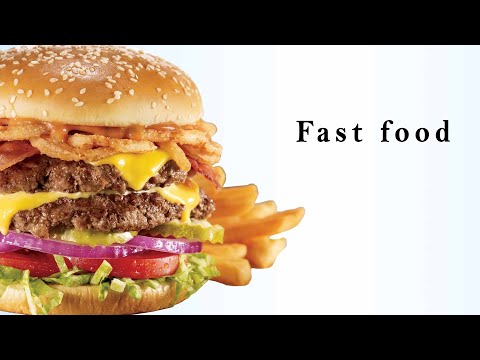Fast food has become a ubiquitous part of our daily lives in a world that thrives on convenience. It’s quick, it’s easy, and it’s available around every corner.
From grabbing a burger on the go to indulging in a crispy batch of fries, fast food has ingrained itself in modern culture.
However, with convenience comes myriad questions about its impact on our health, society, and the environment.

In this article, we delve into the pros and cons of fast food, exploring the complex web of factors surrounding our love-hate relationship with these quick and often tempting culinary choices.
Join us on a journey to dissect the nuances of fast food consumption as we weigh its benefits against the potential drawbacks that have sparked debates and discussions worldwide.
What Defines Fast Food?
“fast food” refers to food that can be prepared and served quickly. It is usually sold by fast food restaurants or street vendors, prioritizing speed and low cost.
Some defining characteristics of fast food:
- It is mass-produced ahead of time for efficiency
- It is prepackaged for easy takeaway/carryout
- It is made with cost-efficient ingredients to keep prices down
- It requires minimal preparation before serving
Examples of everyday fast food items include hamburgers, french fries, pizzas, fried chicken, tacos, sandwiches, and hot dogs. Major fast food chains like McDonald’s, Subway, and KFC specialize in such offerings.
So, fast food emphasizes convenience, cost-efficiency, and standardized quick preparation. Now, let’s analyze some of its notable pros and cons.
Pros of Fast Food
While it is easy to dismiss fast food as junk food, it does have some benefits that have driven its massive popularity across the globe:
Convenience
This is the prime reason people gravitate towards fast food. It is designed for quick, hassle-free meals on the go without requiring reservations or waiting service. Fast food joints are also plentiful, with chains with local outlets across neighborhoods.
Being able to pop in any time to grab a quick burger or slice of pizza adds a lot of convenience to busy, unpredictable schedules. For many workers and students with little time to spare, fast food offers a handy way to fill hunger pangs.
Taste/Craveability
Fast food often simply tastes good! Those carefully engineered combinations of fat, salt, and sugars hit food pleasure centers in the brain. Fast food companies spend a lot of R&D innovating ever-more crave-able flavors. So, no wonder people flock for the distinctive taste of a Big Mac or KFC hot wings!
Taste is highly personal, of course, but the popularity of fast food flavors worldwide shows that they get some things right.
Cost
Fast food is cheap, with value menus making it relatively affordable. For lower-income groups, paying just a few bucks for a filling burger or pizza is preferable to costlier restaurant meals. Dollar menus and combo deals ensure there are plenty of budget options.
Fast food’s cheapness and abundance contribute significantly to its scale and loyal customer base.
Standards/Familiarity
Say what you want about fast food chains like McDonald’s, but they have perfected operational efficiency. You know precisely what you’ll get in terms of quality of ingredients, preparation, and taste when you visit any of their thousands of global locations.
This standardization and familiarity is reassuring – there are no surprises. People can count on their favorite burgers or nuggets tasting just like expected. For tourists and travelers, global brands like McDonald’s provide a comforting slice of familiarity abroad.
So, in many ways, fast food delivers precisely what it advertises – quick, affordable, tasty, consistent meals. But it comes with notable downsides, too.
Cons of Fast Food
Unhealthy
This is likely the biggest issue with fast food – its general lack of nutrition and abundance of unhealthy attributes:
- High in calories: Fast food items pack a heavy caloric punch, often containing almost a day’s worth of calories in a single meal. All those sugars, fats, and sodium load up meals.
- Low nutritional value: Little whole foods and fresh produce means fast food meals lack vitamins, minerals, fiber, and other nutrients
- Highly processed: Heavily processed fast food, loaded with chemicals and additives, no longer resembles real food—processing strips away most nutritional value.
- Linked to illnesses: Frequent fast food consumption is linked to obesity, heart disease, stroke, diabetes, and other conditions – especially as the body suffers from such heavy, greasy, sugary meals.
So, there are significant concerns about how unhealthy fast/junk food is compared to wholesome, nutritious meals.
Harmful Farming/Sourcing Practices
Fast food supply chains catering to millions daily have an enormous footprint. Keeping up with massive demand for all that beef, chicken, dairy, etc, involves practices criticized as unethical and unsustainable:
- Animal cruelty: Most fast food chains source food from industrial cattle/poultry factory farms. Rampant abuse and inhumane practices plague such farms trying to maximize production.
- Deforestation: Growing soy for animal feed requires clearing rainforests, harming biodiversity, and mitigating climate change.
- GHG emissions: All stages of fast food supply chains – from farming to processing to transportation – involve considerable fossil fuel usage, emitting greenhouse gases.
- Exploitative labor practices: Extreme power asymmetry between massive fast food corporations and contracted farmers enables abusive contracts that hurt livelihoods.
So, sincere concerns exist about whether fast food production exhibits sufficient environmental stewardship and compassion.
Social/Cultural Drawbacks
Beyond nutrition and ethics, researchers have flagged some cultural impacts of fast food’s growing dominance that affect society broadly:
- Obesity crisis fueling: Fast food isn’t the only culprit, obviously, but its affordability, abundance, craveability, and unhealthy attributes contribute to obesity rates. Related illness strains healthcare systems.
- Undermining traditional diets: Foreign fast food chains supplanting local cuisine risks eroding cultural connections to traditional diets tailored to community health needs.
- Addictive properties similar to tobacco: Scientists note biological addiction pathways triggered by consuming fast food high in fat/sugar/salt. Fostering food addiction has concerning public health implications.
- Aggressive marketing towards kids: Cartoons, collectibles, and jungle gyms target kids who lack defenses against such tactics. Conditioning kids to associate fast food with happiness raises ethical alarms.
Therefore, both individual and societal impacts intertwine with fast food’s meteoric rise.
So, in summary, while fast food offers convenience and affordability, explaining its popularity, it carries significant baggage regarding health, ethics, sustainability, and cultural impacts.
There are good-faith debates around reforming systems to mitigate downsizing or banning fast food. But, creative solutions respecting this complex challenge are needed.
Attempts at Mitigating Downsides
In response to mounting criticism, fast food chains have taken some steps to introduce healthier, ethical options:
- More beneficial ingredients like whole grain buns
- Salads/wraps and lean protein options
- Committing to cage-free eggs or antibiotic-free chicken
- Partnering with environmental groups
- Fairtrade coffee
- Curtailing kids advertising
Policies like soda taxes or mandatory calorie labeling also help address public health issues while letting customers retain their choice.
However, such initiatives are often conducted more for PR than to bring transformational change. Confronting negatives like health impacts, animal cruelty, and fair worker pay would involve more fundamental shifts to the fast food business model.
Firms are understandably reluctant to jeopardize the profits of delivering affordable, tasty convenience that made them successful in the first place.
Overall, the onus lies not just on corporations but also on regulators and consumers making thoughtful choices. Coordinated efforts aligning business priorities, policy reforms, and social activism are essential for lasting positive impact.
Forming a Balanced Opinion
Fast food, exemplifying the best and worst of modern commerce, divides opinion. In many ways, it delivered on consumer desires – value, speed, and taste driving its rise.
Who doesn’t enjoy a hot burger or slice of pizza now and then? But consequences ranging from health to environmental compel moderating or avoiding it.
Rather than knee-jerk reactions either lionizing or vilifying fast food, perspective recognizing its nuances is prudent. Mindful consumption while pushing for continually elevating standards could help realize benefits while minimizing downsides. The fast food industry is responsive to shifting preferences.
So, through conscientious consumer values and civic engagement, collective pressures could steer these massively influential corporations towards more ethical, sustainable practices benefiting all.
But such solutions require first acknowledging fast food’s pros and cons, its role in society, and the challenges of reforming gigantic infrastructures optimized for profits and growth.
Finding optimal balances benefiting stakeholders and the greater social good is the ideal we could strive for.
Bottom Line:
Fast food is undeniably popular and convenient, but also extremely unhealthy and harmful in excess. While an occasional fast food meal is fine, regular consumption is strongly linked to obesity, heart disease, and other illnesses.
Additionally, there are legitimate concerns around the environmental footprint and ethical issues like animal welfare in fast food supply chains catering to millions daily. Aggressive marketing to kids is also worrying.
Attempts to offer healthier options are mostly superficial, as that undermines the core fast food business model of affordable tastiness and convenience above all. Real reform requires regulatory and consumer pressure, not just voluntary half-measures.
In conclusion – enjoy fast food in moderation if you choose, but be mindful that its convenience comes with heavy costs. Support moves towards more ethical, nutritious practices. But lasting gains require deep supply chain, policy, and cultural shifts through coordinated efforts between companies, government, and society.
The core appeal of fast food won’t disappear overnight, nor should it. Conscientious consumption and continual standards elevation can help balance pros and cons. Top of Form
